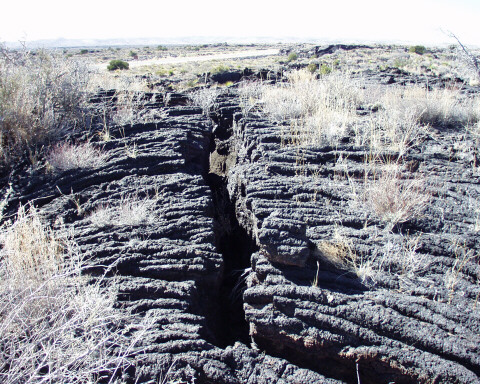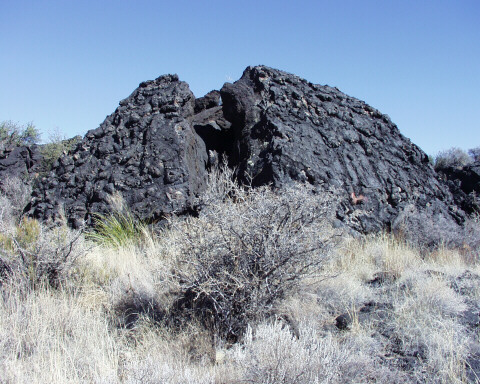
Features of the Carrizozo Malpais

The Carrizozo Malpais preserve many features that are observed in currently-forming Hawaiian-style lava flows. One of the most apparent is the pahoehoe (pah-hoy-hoy) texture of the surface of the flow. The texture, shown in the picture below, has the appearance of a coiled rope.
This characteristic pahoehoe texture forms when the surface of the flowing lava begins to cool, and the underlying, hotter lava is still flowing. The cooler surface is dragged along by the flowing lava underneath, and forms the wrinkles seen in this picture.
Other features observed in the Carrizozo lava flows include tumescent areas, large fissures, collapse pits, and small lava tubes. These features can be seen in the images below, and all formed during the time that the lava was actively flowing. Tumescent areas and large fissures are formed when lava flows in under an already cooled crust, causing swelling and cracking at the surface. The collapse pits and lava tubes form when lava flows out from under a cooled crust, either leaving behind an empty tube, or causing a collapse



Travel by foot on the surface of the Carrizozo lava flow is slow and difficult. Travel by hoofed animals, such as horses, mules, or oxen would have been near impossible. Hence the term "malpais" which roughly translates to "bad footing".


